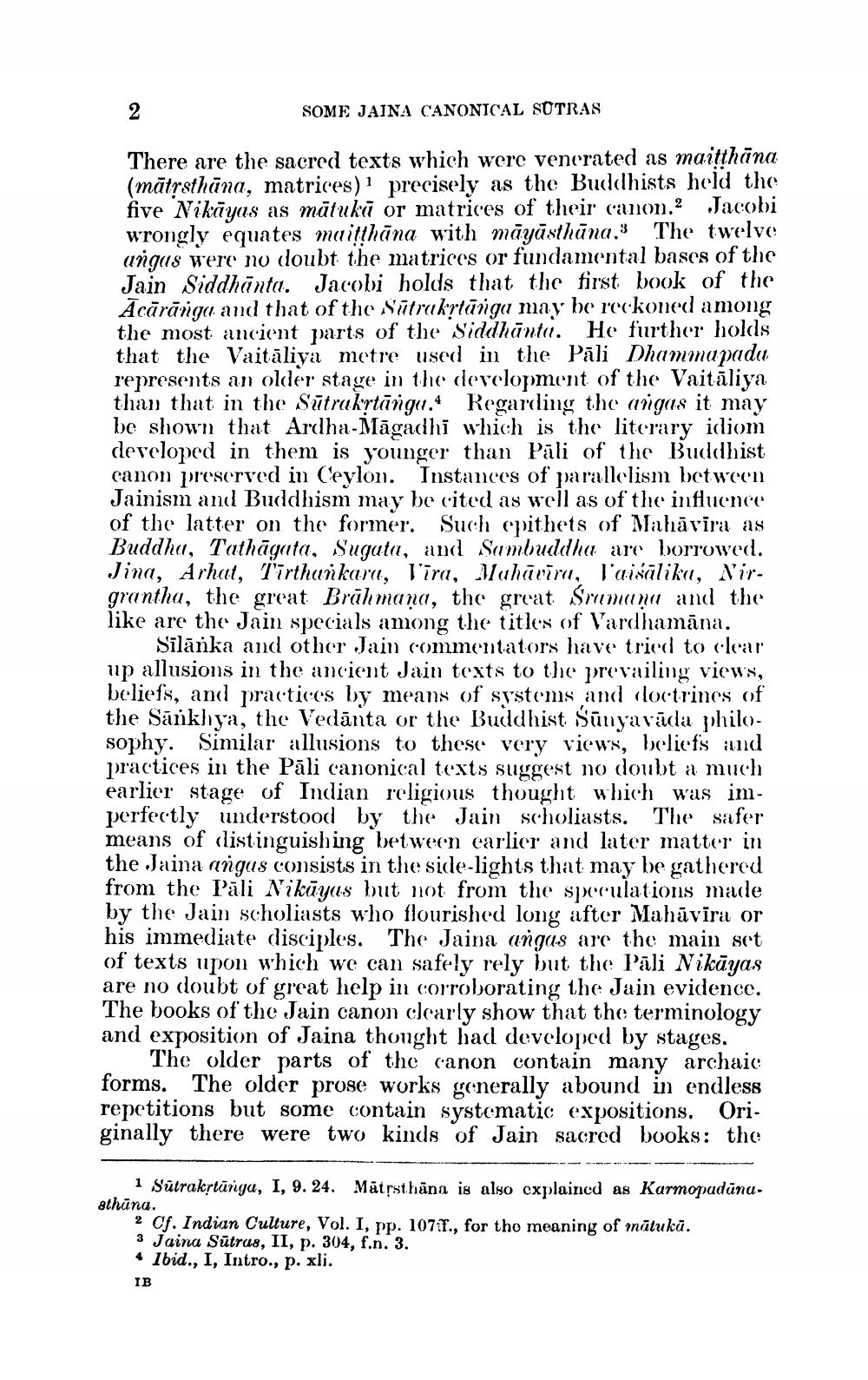________________
2
SOME JAINA CANONICAL SUTRAS
There are the sacred texts which were venerated as maiṭṭhāna (matṛsthāna, matrices) precisely as the Buddhists held the five Nikayas as matukā or matrices of their canon.2 Jacobi wrongly equates maitthana with māyāsthāna. The twelve angas were no doubt the matrices or fundamental bases of the Jain Siddhanta. Jacobi holds that the first book of the Acaranga and that of the Sutrakṛtānga may be reckoned among the most ancient parts of the Siddhanta. He further holds that the Vaitaliya metre used in the Pali Dhammapada represents an older stage in the development of the Vaitaliya than that in the Sutrakṛtanga. Regarding the angas it may be shown that Ardha-Magadhi which is the literary idiom developed in them is younger than Pali of the Buddhist canon preserved in Ceylon. Instances of parallelism between Jainism and Buddhism may be cited as well as of the influence of the latter on the former. Such epithets of Mahāvīra as Buddha, Tathāgata, Sugata, and Sambuddha are borrowed. Jina, Arhat, Tirthankara, Vīra, Mahāvīra, Vaišālika, Nirgrantha, the great Brahmana, the great Sramana and the like are the Jain specials among the titles of Vardhamana.
Silanka and other Jain commentators have tried to clear up allusions in the ancient Jain texts to the prevailing views, beliefs, and practices by means of systems and doctrines of the Sankhya, the Vedanta or the Buddhist Sunyavāda philosophy. Similar allusions to these very views, beliefs and practices in the Pali canonical texts suggest no doubt a much earlier stage of Indian religious thought which was imperfectly understood by the Jain scholiasts. The safer means of distinguishing between earlier and later matter in the Jaina angas consists in the side-lights that may be gathered from the Pali Nikayas but not from the speculations made by the Jain scholiasts who flourished long after Mahavīra or his immediate disciples. The Jaina angas are the main set of texts upon which we can safely rely but the Pali Nikāyas are no doubt of great help in corroborating the Jain evidence. The books of the Jain canon clearly show that the terminology and exposition of Jaina thought had developed by stages.
The older parts of the canon contain many archaic forms. The older prose works generally abound in endless repetitions but some contain systematic expositions. Originally there were two kinds of Jain sacred books: the
1 Sutrakṛtānga, I, 9. 24. Mätṛsthāna is also explained as Karmopadūna. athāna.
2 Cf. Indian Culture, Vol. I, pp. 107ff., for the meaning of mātukā. 3 Jaina Sutras, II, p. 304, f.n. 3.
4 Ibid., I, Intro., p. xli.
IB




